In South Korea, in 1998, the Jeongsang-dong area of Andong City, Gyeongsangbuk Province, was designated for redevelopment into a new residential area. Along with this decision, several abandoned graves in the vicinity were to be relocated. During this process, a tomb containing a mummy and various burial goods was accidentally discovered. Given the relatively good condition of the coffin, the tomb was initially thought to date from recent times. However, the truth was quite different.
Upon investigation, archaeologists found a letter inside the tomb. Based on the style of writing in Hangeul and its content, the identity of the mummy and the 450-year-old age of the ancient tomb were established.
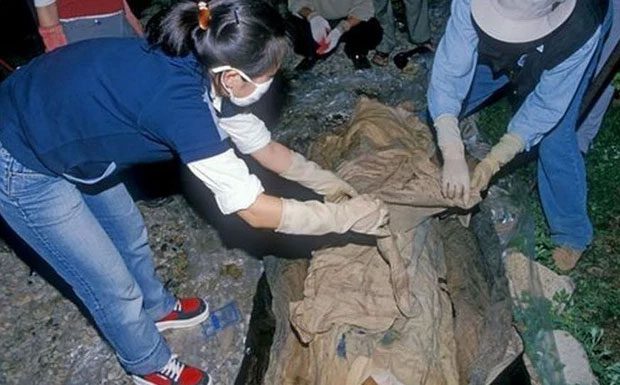
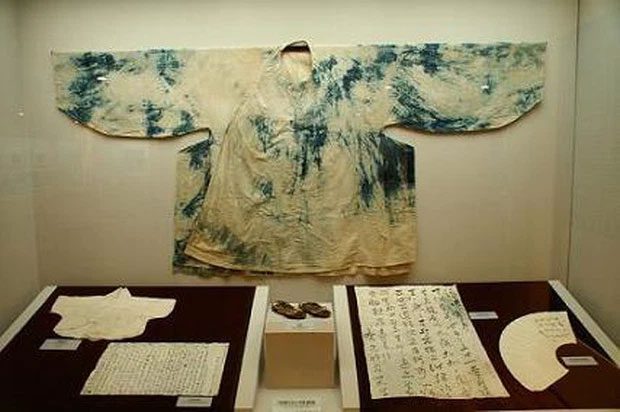
Some burial items found inside the ancient tomb are now displayed at Andong University Museum.
The mummy inside is that of a man named Eung Tae. His family consisted of four members: Eung Tae, his wife, one child, and the unborn child of his wife. At that time, an infectious disease was rampant in the area, claiming many lives. Eung Tae was not an exception; he fell ill and had to bid farewell to his family at the age of 31.
When his mummy was found, the letter he had kept with him sparked much curiosity. After research, it was determined that the handwritten letter was written in 1586 on Hanji paper, a traditional Korean paper, measuring 58cm by 34cm.
The writer was Eung Tae’s wife. Referring to her husband as “Father of Won”, the woman poured out her emotional sentiments for her husband, who was no longer there. The letter expressed her pain of separation, her compassion, and sorrow for herself and their two children. Now a widow, she mourned her husband, leaving their children fatherless.
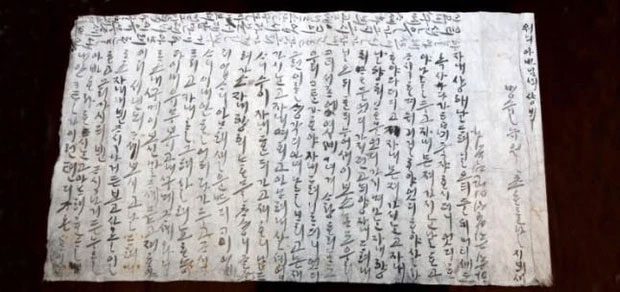
The condition of the letter after 450 years.
Not only did the letter remind her of the beautiful memories they shared when he was alive, but she also reproached him for many things. She scolded him for promising to live together until old age and then suddenly leaving her and their children. Yet, despite her reproaches, at the end of the letter, she weakly asked him to return to her in her dreams. “Whenever we lie down together, you always said to me, ‘Are there others who cherish and love each other like we do? How could you leave all of that and depart before me?”
Each word she wrote was soaked in intense sorrow, moving readers to tears. The deep, sincere love they had for one another was evident, and perhaps Eung Tae’s sudden departure left her in despair, as if she could never recover.
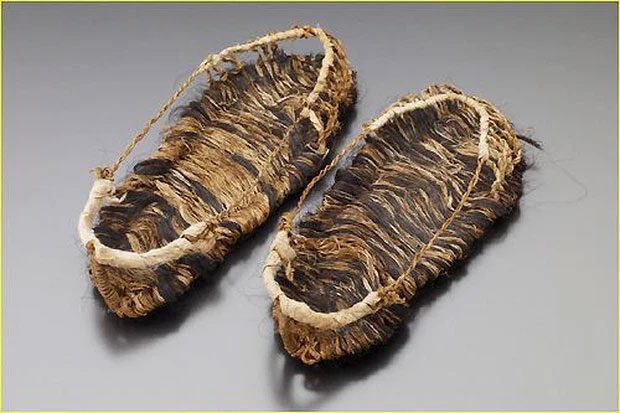
The Mituri sandals made by ‘Mother of Won’ from her own hair.
Inside the coffin, there was also a pair of hemp sandals from the Joseon era (known as Mituri). While alive, “Mother of Won” had woven these sandals by hand from her own hair, wishing for her husband to endure his illness and recover quickly. However, Father of Won would never have the chance to try on those precious sandals. After her husband passed away, she wrote a heartfelt letter to him and buried it along with the sandals as a keepsake.
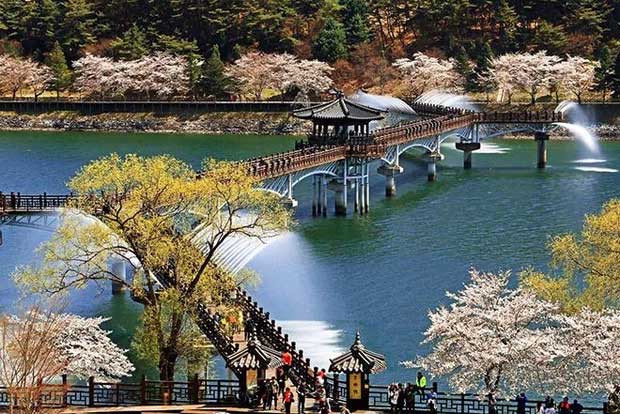
A panoramic view of Woryeonggyo Bridge during cherry blossom season.
After the mummy was discovered in 1998, the touching story and the contents of the letter became famous, inspiring songs, musicals, and especially the renowned Woryeonggyo Bridge in Andong City.





















































